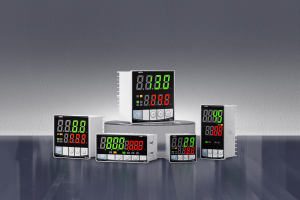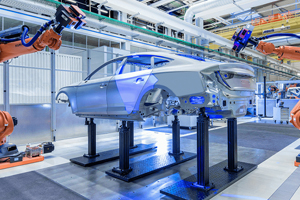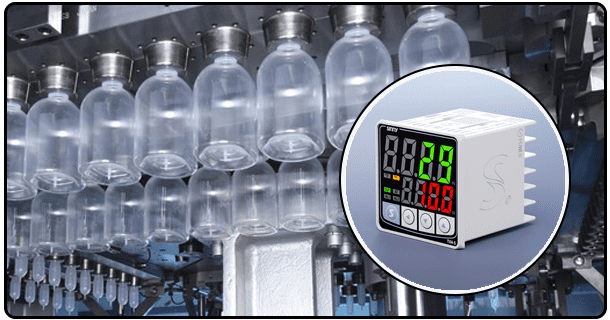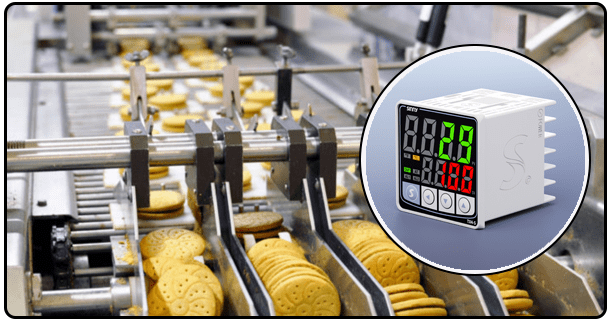The PID temperature controller guide: setup, tuning & troubleshooting
I. I. Introduction
These sophisticated devices use a mathematical algorithm--Proportional, Integral, Derivative -- to dynamically adjust heating or cooling outputs while maintaining setpoints within +/0.1degC. These sophisticated devices utilize a mathematical algorithm--Proportional, Integral, Derivative--to dynamically adjust heating or cooling outputs, maintaining setpoints within +-0.1degC. PID controllers are more energy efficient and provide consistency in the process than simple on/off controls that can cause oscillations. The guide demystifies the operation of PID controllers, giving engineers, technicians and hobbyists the ability to maximize their potential.
II. The Core Components in a PID Control System
Three synergistic factors contribute to the effectiveness of PID.
Proportional (P): Reacts immediately to the error. Increased P-gain speeds up response, but can also cause instability.
Integral: Removes persistent offset by adding up past errors. I-actions that are too aggressive can lead to overshoot.
Derived (D): Predicts future error trends by using rate of change. The D-action dampens the oscillations, but increases sensor noise. Reference: PID Foundation from Control Guru provides rigorous mathematical insight.
III. Installation Guide: Step by step
1. Hardware Installation:
Connect the sensors (e.g. K-type thermocouples), observing polarity, to inputs.
Connect output terminals of solid state relays (SSRs), ensuring that the current rating is correct.
Installation of fuses is essential to prevent electric hazards.
2. Initial Configuration
Select the desired controller from the menu.
Temperature units in degrees Celsius and Fahrenheit
Type of input sensor (e.g. PT100 RTD).
Control mode (e.g. PID, Manual, On/Off)
For fault protection, set alarm thresholds for example high temperature limits.
3. Operational modes:
Manual mode: Fixed power output percentage.
Auto Tune: Enables self-tuning.
Ramp/Soak : Programmes thermal profiles with multiple segments (e.g. 5degC/min to 150degC and hold for 30 minutes).
Refer to: Omega Engineering’s Practical Wiring Guide for configurations.
IV. The PID tuning methods
1. Manual tuning (trial-and-error)
Increase P until oscillation is sustained (ultimate gain, Ku). Ascend P to a sustained oscillation (ultimate Gain, Ku).
Reduce P by 50%. Introduce I gradually to eliminate steady-state errors.
Start at 10% P gain to add D and suppress overshoot.
2. Ziegler-Nichols Method:
Calculate oscillation period at the ultimate gain.
Use the formulas:
P = 0.6 x Ku
I = Tu x 2 (repeat for 2 minutes)
D = 8 / Tu
This method is not recommended for processes that are slow (>30 minutes).
3. Auto-Tuning:
Start built-in autotune. The controller will cause controlled oscillations in order to calculate gains.
Limitation: Not reliable with variable loads, e.g. batch ovens that have door openings.
Refer to Control Engineering Tuning Deep Dive for validation of methodologies
Sous Vide cooking: Keeps the water bath temperature at 60degC plus or minus 0.2degC to achieve perfect texture.
3D Printing Stabilizes the nozzle temperature at around 210degC, despite filament cooling.
Industrial furnace: Multi-zone PID cascades prevent PCB from warping when soldering reflow is performed.
Search engine optimization tip: For SEO, use process-specific keywords like "PID" (process identification device) or "kiln temperatures controller".
VI. Common Problems
Symptom
Most Likely Cause
Solution
Constant oscillations
Over-P-Gain
Increase D; reduce P
Slow Setpoint Reach
Low I or High P
Reduce I integral time; boost P
Temperature drift
Sensor calibration drift
Recalibrate per Fluke's Guide
Electrical Noise
Unshielded Cables
Add ferrite cores to braided shielding
VII. Advanced Optimization Techniques
Cascade Control : Uses two PIDs - the primary (master) setpoints for the secondary (slave). Ideal for heat exchangers that have fluid flow variations.
Control Feedforward: Compensation for measured disturbances.
MATLAB's PID Tuner is used to simulate responses before hardware deployment.
VIII. VIII.
The PID controller allows for unprecedented precision in thermal control. Start with modest gains and validate them through testing iteratively. Electrical safety should be prioritized. PID expertise becomes more valuable as industries automate.
- The Expert Guide to Omega PID Controls (2024): Installation, tuning & applications
- Labs & Industry: PID-controlled water bath design for precise temperature control.























